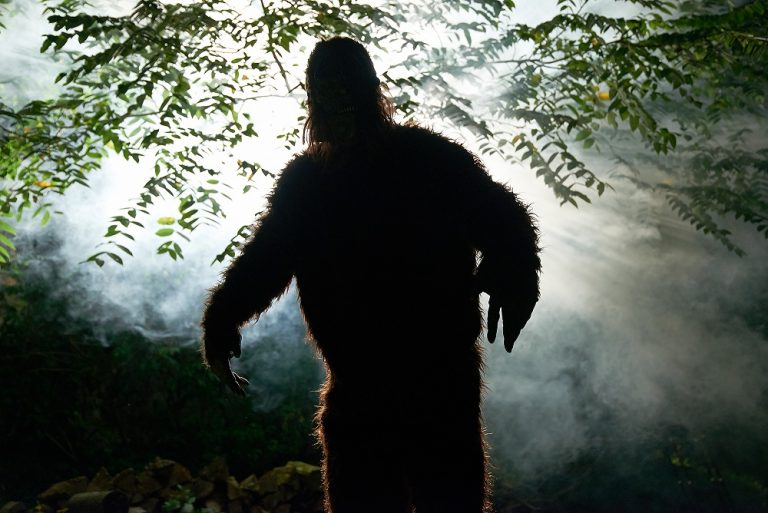Featured Image from: People
Unicorns, yetis, and gnomes – around the world, people have their own legends surrounding countless mythical creatures. And in many cases, various cultures have strange rules on how to handle these creatures if you either want to survive or earn wealth or fortune from them. If seamen encounter a mermaid, for example, they must resist listening to her song or they may be enchanted to jump overboard and drown. Those who want to avoid werewolf attacks must always have silver available. And if you follow the rainbow and capture a leprechaun, you have both its pot of gold and three wishes.
These are all just myths and folklore, and while societies today still believe (or at least know about) the superstition surrounding mythical creatures, you’ll rarely see countries that seriously practice these. But in Skamania County in the state of Washington, local authorities may just be taking superstition a little too far as it has probably one of the weirdest (if not the only) law surrounding mythical creatures.
If you ever happen to be in one of the county’s many state parks, forests, or wildlife refuges and happen to find the elusive Bigfoot, kill it, and finally prove its existence, two things will happen: you will forever be known as the person who proved Bigfoot is real, but you’ll spend the first five years of your fame in jail.

Finding Bigfoot
Bigfoot – also known as the Sasquatch – has been a part of North American folklore for centuries. People believe that this is the “missing link” that could prove the evolution of man. If you look at the evolution of man, there comes a point when apes stop walking on all fours, lost most of the body hair, and walk upright. Many believe Bigfoot is one of the few creatures during this transition, and is said to be a hairy, muscular, ape-like creature up to 9 feet tall with giant feet.
Bigfoot is said to dwell in forests and the wilderness, so you won’t find him in urban civilizations, but in forested areas such as in Oregon, Washington, and British Columbia. Plenty of people have scoured the forests trying to find Bigfoot or hard evidence of his existence, but so far the evidences are either hoaxes or inconclusive evidence. Non-believers claim that photos that suggest Bigfoot’s existence may just be misidentified animals such as bears that also frequent forests.
Bigfoot’s existence has been subject to plenty of debate. Scientists generally dispute the existence of Bigfoot. If he were real and were the “missing link,” as a minority of scientists would claim, then he would not have survived this long and have eventually adapted. There are plenty of legitimate organizations dedicated to searching for Bigfoot, and in some cases, university and academic institutions are willing to shell out money for events related to Bigfoot.
Bigfoot in Northwestern US
Bigfoot’s existence may be debated, but it has helped tourism in northwestern states, especially Oregon and Washington. Apart from the people who visit to search the forests for the chance to discover Bigfoot, state governments capitalize on the pop culture phenomenon of Bigfoot.
Along the Pike Peaks Highway in Colorado, you can find a sign warning drivers to look out for Bigfoot crossing. It’s a tongue and cheek reference meant to rile up tourists over one of its popular features. However, Washington took it one step further – they made it into a law.

Why Skamania County Has a Law Against Killing Bigfoot
In 1969, Skamania County created ordinance 1969-01, a law that banned people from killing Bigfoot, should they ever find it. If they did, it would be considered a felony and the killer would be charged with five years in prison.
Originally, it may have been meant as a joke, as the Board of County Commissioners created the ordinance on April 1, 1969. However, when more hoaxes came that claimed Bigfoot was real, more people were heading to the Pacific Northwest with the intention to track down and hunt Bigfoot. That meant the county saw plenty of visitors – armed with lethal weapons.
Seeing as the weapons hunters brought became a threat to the locals, and the fact that there were no national or state laws about these hunting firearms, the Board decided to change the current standing ordinance but made a few changes to the law.
Under Ordinance 1984-2, the Board recognized that there was some evidence that Bigfoot was hiding in their area, which lead to an influx of both scientific investigators and hunters. To protect both tourists and locals – and at the same time write a law in such a way that it didn’t deny people their Second Amendment – the Board amended the law so that less people would enter their county carrying firearms.
The law states that Skamania County was a Sasquatch refuge, since the Bigfoot was an endangered species, so people were not allowed to hunt for him there. People who try may be punished with a gross misdemeanor or a misdemeanor and may be fined with a year in the county jail for up to one year or a fine of up to $1,000.
The Real Purpose Behind the Law
It’s a smart law. It’s highly likely that the Board doesn’t really believe Bigfoot exists. However, from the way they write their law, people looking to hunt for Bigfoot will have to take their firearms and weapons to another county.
Scientists looking to find and study but not kill Bigfoot, however, are still welcome to visit. This not only maintains their tourism and notoriety for having a law about Bigfoot, but it decreases the amount of people with lethal firearms in the county without explicitly saying so.
This goes to show the brilliance of Skamania County’s Board. The law banning Bigfoot’s death not only improves publicity and bolsters tourism as they egg on the possibility that Bigfoot exists, but they provide their community with more safety as people intent on hunting Bigfoot will have to look elsewhere. So, if a law pops up that seems weird, take a look at the effects that law provides. Chances are, it was approved for a very good reason.



